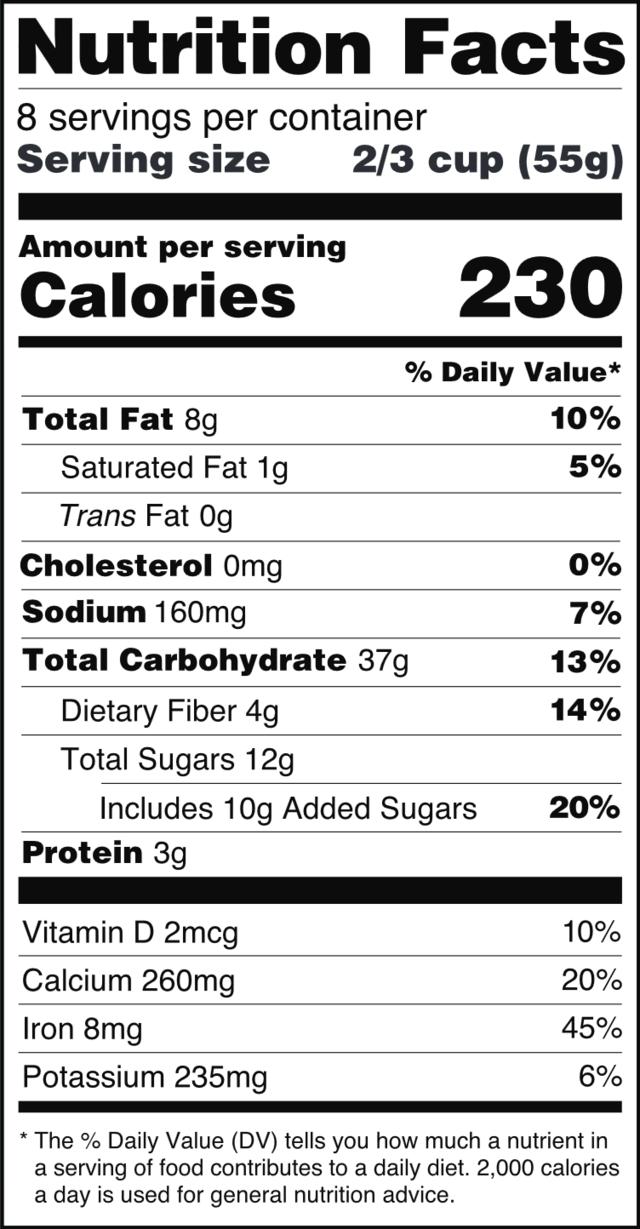
Food is one basic requirement that humans need for survival. Yet, it is still not readily available to everyone. From scarcity to the rising prices of food, writers discuss the national problems regarding food availability and the collective action that needs to be taken to solve them.

Departing from the global problem that food poses, our individual relationship with food can be complicated. The embedded societal pressures of weight watching and diet culture have pushed many people to unattainable and dangerous practices. At the same time, the overwhelming amount of unhealthy food products have become a commonplace in our eating habits. With a multitude of reasons, there are countless ways we negatively impact our health. Writers remind us that we as consumers must put our health first.
Aside from the issues that we face, food undoubtedly improves our lives. The ways we bond, whether it be having a meal and catching up or sharing a simple snack, food is an important part of the human experience. Its restorative and cross-cultural power brings us together.

UNHEALTHY FOOD CHOICES IN KOREA
Written by Austin Chung Layout by Andrew Ham
According to Jeeyoung Kim, an individual who wrote multiple articles about unhealthy foods, Korea leads in per capita consumption of instant noodles, with 73.4 million servings per capita in 2017. Ramen, though delectable, contains monosodium glutamate, which is detrimental to the human body as it is a food additive associated with weight gain, brain health issues, headaches, nausea, and high blood pressure. Other popular foods also contain chemicals that harm the human body and mentality, which creates unnecessary negative effects.
Due to uptight work schedules and stressful deadlines, many Koreans indulge in unhealthy food choices in order to relieve stress. Though their choices may not immediately impact their lives, increased consumption could lead to devastating consequences in the long term. One side effect of eating unhealthy food is obesity, a common trait seen in those who cannot control their food intake. Popular Korean snacks like chips and ramen contain MSG and other substances that increase calorie intake but lack nutritional value. Additionally, eating these foods puts an individual at greater risk of 13 different types of cancer, including endometrial cancer and colorectal cancer. Excess consumption of unhealthy foods can also lead to depression, weak memory, and fatigue. Our brains require nutrition and energy to function properly, and unhealthy foods fail to meet the requirements. Many studies have shown connections between consuming detrimental foods and depression, most likely because fibers, which are thread-like structures found in many plant-based foods, heal the secretion of serotonin that helps keep
our moods in balance. The main problem is not the intensity of the poison, but its addictiveness. Eating these foods occasionally isn’t hazardous; however, constant consumption tells a different story.
Although the horrific effects of unhealthy food choices arer widely acknowledged, many still prefer to choose these foods over their healthier counterparts. The problem here isn’t the lack of notice, but the lack of attention to it. Unfortunately, due to busy schedules, people have limited options for food choice. Lack of time leads to people choosing food from the convenience store, as proper meals take longer to make. Stress eating is another factor, as many individuals resort to delicious, fatty meals to help ease their mind. Educational institutions and workplaces giving more lunch time would settle one of the two issues, as relieving time constraints would allow people to eat more freely. Instead of eating to relieve stress, finding healthier alternative methods like pursuing one’s hobby can be more beneficial, as studies have shown more positivity in those who eat healthier. In worse cases, one can seek professional help from a therapist or health expert.
The hardest choices require the strongest will. To change one’s lifestyle isn’t easy, but the benefits of choosing healthy foods over oily or sugary counterparts are prominent, and one will find greater happiness and overall better quality of life once they break through the dilemma. Once we choose to eat healthier, the world around us will become more delightful and vibrant.


This is a digital painting created with Procreate. When reading up about food shortage, I came across various fishbone diagrams (also called a “cause and effect diagram”) that explained causes for food insecurity such as unemployment, natural disasters, lack of access to healthcare, etc.
This is a play on words.
 Fishbone
Hana Ito
Fishbone
Hana Ito
FOOD ADDITIVES— ARE THEY WORTH IT?
 Written By: Sahngwon Lee Layout By: Ellen Ryu
Written By: Sahngwon Lee Layout By: Ellen Ryu
Aer coming back home from a tough day at school, all I want is to eat my favorite food: ramen. Ramen is the goto food for a lot of people—but why? is is because a signicant amount of food additives are added to ramen in order to enhance its taste and make the avor more addictive. So, what exactly are food additives? According to the World Health Organization, food additives are “substances that are added to food to maintain or improve the safety, freshness, taste, texture, or appearance of food.”
Some common food additives include MSG, antioxidants, food acids, colors, emulsi ers, and more. Although these are great in enhancing our experience with food, they can be
harmful in both the short term and long term. First of all, food additives can have many adverse short-term e ects, especially on health. Consequences such as problems to the digestive system or to the skin can take place in an individual in the short-term. For example, severe diarrhea or colicky pains due to food additives are common problems experienced by consumers. ere was a time when I drank 2 big bottles of Kool-Aid, which contain food additives of colors, and felt severe stomach pain a er a few hours, causing me to use the bathroom numerous times throughout the night. Furthermore, according to Stryx,
a trusted skincare product company, instant noodles can cause acne breakout and worsen already existing acne because of the food additives included in them, especially MSG. Food additives can also have various long-term e ects that can be harmful. Negative e ects on the nervous system or on the respiratory system could be lasting, as nervous disorders or respiratory problems cannot usually be solved or cured in a short period of time. Nervous disorders like insomnia, irritability, or hyperactivity and respiratory problems like asthma, rhinitis, and sinusitis are all long-term problems that can be caused by additives and call for medical support. For example, there was a friend of mine who extremely liked eating margarine with everything; he was clueless that margarine had very high levels of emulsi ers. erefore, a er a few months,
he started to experience e ects like irritability and insomnia, a ecting his daily life routine and schedule in the long run.


In conclusion, food additives are very harmful to one’s health, especially to the digestive and nervous systems. Although they are used frequently in food because people enjoy savory and strong tastes, it is important to consider whether or not food additives are safe to consume; even if they are, they should be consumed in reasonable, controlled amounts as they can not only cause shortterm e ects to the health but can also induce long-term effects that can be dangerous to one’s survival.

FOOD PRICES: THE CLIMB TO THE TOP

 Written By: Yeonjae Kim Layout By: Ellen Ryu
Written By: Yeonjae Kim Layout By: Ellen Ryu
Asthe world nears the end of the COVID-19 pandemic, there remains plenty of societal reconstruction to do in every country. Many companies, small businesses, and the economy itself have been a ected negatively, especially in America. However, the people who have been a ected the most are the general public: not only those who produce goods, but even those who consume them. More speci cally, one issue that has greatly impacted consumers is the rise in food prices.
In the US, food prices increased by an absurd 11.2% in the past year. Although it only took one year for food prices to change drastically, it took several years to lead to this change. So what caused the rise in food prices? While there is no single cause, several factors including production di culties, transportation costs, and the irregular supply-chain are some of the main culprits.
Due to the pandemic and the resulting in ation, food production is more di cult than ever. Necessary items such as fertilizers
that are needed to grow crops and raise livestock have become more expensive. According to the Consumer Price Index, the prices of organic products such as eggs and vegetables have increased by 3.5% and 1.7%, respectively. Because basic ingredients for any type of food have all increased in price, it began a chain of raising prices from the stores to the farms to the restaurants, ultimately leading to an exorbitant price for food. Additionally, as the pandemic and its restrictions started to become less strict, people are starting to get new jobs. Though that’s been benecial to the economy as a whole, it adds to the rising food prices because more people must be paid during the production of food.
As food prices increased, people have been forced to buy the minimum amount of food they need. The people who struggle the most from this issue are low-income workers: even though these workers work all day long, many do not have enough money to meet their needs because of the increase in food prices. Since people are not able to a ord large amounts of food, they started to eat out less and use small portions of ingredients to eat at home. Therefore, the quality of life and health of the average American citizen has been greatly a ected because they are not able to enjoy su cient, high-quality food.
2019
If food prices continue to increase according to the current trend, the Food and Agriculture Organization (FAO) predicts that there will be 130 million hungry people in the world by the end of the Covid pandemic. In order to prevent this situation, there are a few solutions we can implement. Firstly, changing the rules of global trading for all countries, not only America, will allow countries to have an abundance of di erent foods. If governments collaborate with the World Trade Organization (WTO), it would be easier to spread resources and increase the export of food staples. Additionally, farmers should be able to decide on what crops to grow and what products are the best in producing the best harvest, so that the quality of the food products becomes better. Furthermore, doubling the public investment in agriculture can help to feed more people and even end hunger. According to the research of Cornell University and the International Institute for Sustainable Development (IISD), 33 billion USD still has to be invested in order to give food to everyone. If we have the public investing more in agriculture, then farms will have more money to use in growing crops


and livestock. Therefore, more food will be produced and the prices of food will decrease again. Lastly, agribusinesses should be incentivized to expand their market. Instead of selling in only their country, they could collaborate with other businesses and countries in order to sell more food. This will allow there to be a greater abundance in food items in all countries, leading to the decrease in food prices, and eventually less people going hungry.
However, because each country has a di erent view on the issue of increasing food prices, it isn’t always possible to get them to collaborate with one another and produce more food products. Therefore, there are a few actions the general public can take to start the chain of decreasing food prices. Citizens can buy in bulk whenever they need something, eat at home more often, and eat everything they have at home before buying more. Although these are simple actions that will only work in the short term, eventually they can cause a long-term e ect as it raises awareness. So, everyone should contribute to the economy to produce food at a reasonable price.

2022
DISPELLING MYTHS ON EATING
Written by Eric Cho
Layout by Andrew Ham
From cooking homemade meals to checking the nutrition table, people care about the food they consume because it is a way to control their health. There are many diet myths that are based on outdated knowledge. Nutrition advice is constantly changing due to newer and more accurate experiments and research.
There is often a misconception that skipping meals reduces caloric intake. Initially, this idea seems like a no-brainer because skipping meals would mean that you are not eating the food that you would originally have eaten. However, that thought disregards the next time you would actually eat. Say that you skipped lunch, thinking that it will make you lose calories. However, this will actually lead to you having a higher calorie intake than if you had eaten your lunch. First, you will naturally eat at a higher volume during your next meal, dinner. This phenomenon of being “over-hungry” is also met by “overeating.” According to research done by Nancy Kuppersmith from University of Louisville, we tend to make unhealthy choices on what food we will consume when we have a higher craving for high fat or high calorie food. Skipping meals can also be the root of many psychological disorders as it leads to lack of blood sugar, leading to the production of cortisol, which is also known as the “stress hormone.” Because our brains use glucose as fuel, this makes us even more susceptible to mental diseases. It is best to have a daily schedule of when to eat.
The impact of late-night eating on the body has been debated for many years because there is no single answer. Generally, the conception that latenight eating is bad is correct; however, it is more complex than just good or bad. First, the impact differs based on the time between eating and sleeping. If food is consumed two hours before sleeping, no matter when you sleep, there seem to be detrimental effects. Therefore, even if you eat late, negative effects can be reduced substantially if you sleep at
least two hours later. Additionally, late-night eating puts you at risk of obesity. The body’s metabolism is low at night as we move much less compared to the day. This makes it hard for our stomachs to digest food, which leads us to eat more than we need as we do not feel full compared to how much we ate.
Another point of controversy is low fat products. In the past, there were many people who thought that a low-fat diet would prevent diabetes and heart diseases. It is important to note that there are four types of fat commonly found in food: saturated, polyunsaturated, monounsaturated, and trans fat. Out of these four types of fats, monounsaturated fats, like in avocados, olives, oils, and nuts, are beneficial to your body, whereas saturated fat and trans fat, found in meat, dairy, and processed foods, are far more detrimental. Trans fat and saturated fats raise cholesterol, whereas monounsaturated and polyunsaturated fats provide a variety of vitamins and keep your heart healthy. One major misconception is thinking that eating fats will lead to weight gain. This correlation is not quite correct as high-fat diets and moderate-fat diets help one lose weight just as easily as low-fat diets. As people learn about these misconceptions, Keto diets, a high-fat and low-carb diet, has become increasingly more popular. Scientists also found that there is no point in eating a low-fat diet if the consumption rate goes up. This is like drinking three cans of diet coke instead of drinking one can of normal coke.
A lot of eating myths that people believe are not factual. They are usually outdated or the results of experiments being incorrectly interpreted with hasty generalizations. Despite there being a lot of debate on what is generally good for your body, the most important thing is to find out what is best for your specific body type. Each person has different goals and has a body that reacts differently to eating.



Food, Culture, Anthony Bourdain
 Written by Junseo Lee Layout by Andrew Ham
Written by Junseo Lee Layout by Andrew Ham
Culture, and Bourdain
Anthony Bourdain,
are all absolutely inseparable.”
No matter what region of the world you are from, food is inherently an essential part of your cultural identity. Be it the rice and kimchi of South Korea or the burgers and hot dogs of the US, every nation has its own unique traditions and practices related to food.

These ideals of how food should be prepared and eaten often extend far throughout a nation’s history, with various cuisines developing over time along with the people consuming them. This longevity and evolving nature can be traced back far beyond the concept of nationality itself, with the necessity of food for survival also being connected to familial and communal bonds in ancient times. These shared cultural identities built around diverse foods and cuisines allowed for stronger social structures and bonds that aided the earliest humans in their survival.
Because of the essential importance of food in not only survival but also cultural cohesion, such traditions were continuously passed down through generations, becoming a source of pride and personal identity even as cultures changed and individuals grew distant from their original cultures. In fact, scientists have found that sensations related to taste and smell evoke the most powerful memories and feelings of nostalgia, a phenomenon that most individuals that have found themselves far away from home can clearly relate to.
In the modern world, food serves as an indicator of cultural identity and unity on a far larger scale than ever before, with immigration and globalization bringing different cultures and a diverse array of foods closer together, allowing for more unique experiences. For instance, the US, famously known as a “melting pot” of cultural diversity,
is home to thousands of different types of cooking, with restaurants dedicated to South American, Middle Eastern, Asian, and European foods all being found on the same street, and entire enclaves of immigrants such as Little Italys and Koreatowns finding communal bonds through the sharing of food.
Among the various positive and negative aspects of modern globalization, the spread of food culture has certainly maintained its beneficial nature, with millions of people being able to connect with both their own culture and the cultures of others, bringing the world closer together as a whole.
These positive impacts left by the spread of food culture are particularly helpful in the modern age, where global conflicts and international tensions have only grown more severe, and hostility and xenophobia between various ethnic groups have only become commonplace. In a world filled with so much antipathy towards people that are perceivably different from oneself, food and cuisine serve as a gateway to introducing new cultures to people and making them more tolerant toward the unfamiliar and unknown. Throughout every ethnicity, culture, and religion, commemorative holidays and festivals centered around feasts and foods gather together millions of different people in celebration, breaking barriers and preconceived prejudices through the shared experiences of eating good food.
This impact of food seems to be a nearly universal experience, particularly for international students such as ourselves, who often find themselves stuck between two cultures, unable to completely understand either nor determine which they belong to. I’m certain that I was not the only person who took this conflict of cultures and resolved it through food, through the embracement of both American and Korean cuisine through which I learned to not only cherish the differing cultures of weach nation, but also how each nation factored into my own cultural identity. For third-culture children and migrants around the world, food serves the same role—a reminder that differing cultures do not work against each other, but rather work together to create a vibrant, diverse world that has a place for each of them.
Considering all that it does for our global society, it is evident that food culture plays an incredibly important role in our modern society, allowing us to peacefully tackle persistent issues such as prejudice and xenophobia through the sharing of food and, as a result, the sharing of our cultures. As Bourdain says, “People are generally proud of their food. A willingness to eat and drink with people without fear and prejudice… they open up to you in ways that somebody visiting who is driven by a story may not get.”
renowned American celebrity chef who spent his life exploring thousands of different types of cuisine and cultures around the globe, once said that “food, culture, people, and landscape
We have all heard of the Whopper or the Big Mac, walking a five-minute distance to the nearest fast food restaurant only to eat and leave quickly. The popularity of fast food is growing at an alarming rate, as a large number of people now consider fast food as their daily meal plan due to its “fast” and convenient consumption. With its popularity comes the question of whether or not we should allow the health issues it may bring to us. Although its cheap prices and the wide expansion of fast food chains in our proximity may allure us, we need to take into consideration the consequences it brings to our body.
The problem of fast food has grown rapidly over the years, creating a never-ending loop of addiction that is prevalent everywhere in the world. For example, the pop-

FAST FOOD:
Is it really “good?”
ularity of fast food in America is familiar to the extent where it has molded a common stereotype: all Americans love burgers. With fast food chains dominating the American food economy, it is undoubtedly the “king” of the food industry, creating a consistent gradual increase of revenue over the years. The projection of the fast food economy is seen to never drop over the span of 6 years, with a projected growth from $972.4 billion to $1,467 billion. Prices of fast food that go as low as $0.99 to attract those looking for a cheap alternative to a palatable meal. This aspect often applies to the college students in America due to their financial situations and the lack of proper time to eat. Considering the fast food industry’s immense revenue and income, students can be considered their biggest customers.
FOOD: really “good?”
More than 20 percent of college students eat fast food daily while 50% eat three fast food meals per week.
The major reasons behind the popularity of fast food are related to the conditions of society. In Korea, for instance, high school students are continuously being led to eating fast food because of the culture of quick eating. The constant competitive nature of Korean society is the catalyst of the increase of the fast food industry in Korea. Although its percentage is lower than America’s, it showed a gradual increase from 2011 to 2021, with 28.3 percent of students claiming that they eat fast food three times a week. Fast foods are engineered to be addictive: over 70 percent of the food contains sugar.
While avoiding fast food altogether is nearly impossible, its consumption can definitely be limited. There are always alternatives to a fast food diet. Simple solutions. The idea of “comfort eating” derives from the constant consumption of fast food: eating as a way to soothe oneself to relieve stress. There are always other ways to soothe oneself, such as exercising, doing your favorite hobbies, etc…
The dangers of fast food is a seldom discussed topic, as people do not put much thought into what they eat on a daily basis. When the concerns of fast food are taken into consideration, they are introduced to a myriad of problems. Though it would be impossible to completely eliminate junk food habits, limiting oneself is always possible.
 by: Alex Cho
layout by: Rachel Yoon
by: Alex Cho
layout by: Rachel Yoon
THE HARMFUL EFFECTS OF EXCESSIVE DIETING
Keeping fit and staying in shape is a goal that almost everyone seems to have in today’s society. No matter the method, one thing is for certain: extreme dieting is not the right way to go about achieving that goal. Clearly, people who diet do so with the goal of staying healthy, but quite the opposite is true for many diets: there are a plethora of negative consequences that follow along many individual diets. Some of these diets include fasting, the keto diet, the paleo diet, just to name a few.
The first reason dieting is not the best way to stay healthy and lose weight is that dieting merely lowers the base metabolic rate, causing quick relapse in weight after the end of a diet. According to the Lindner Center of HOPE, aggressive dieting also causes one to “[burn] less energy when resting, resulting in significantly lower daily needs in order to sustain achieved weight after the diet is over.” Although dieting may make it seem as if one’s weight is dropping, this is merely a faux in that it makes one’s body burn less energy. This in turn can result in people who finish dieting to almost instantly regain their weight that they lost. Furthermore, Linda Carroll, a writer for NBC News, reports that “Metabolic adaptation during weight loss can make it harder for people to achieve their goals … In this study we found people with more metabolic adaptation took longer to achieve their weight-loss goals.”
As such, although dieting may seem effective on the surface, on the inside, the differences in metabolic rate suggest otherwise. This is ever more so harmful when the fact that dieting results in
 Written by Sam Hong
Layout by Andrew Ham
Written by Sam Hong
Layout by Andrew Ham
malnutrition is added into the mix.
Furthermore, it goes without saying that extreme dieting comes along with eliminating specific foods and food groups from your diet, which can run the risk of nutritional deficiencies. Take, for example, people on the Keto diet. St. Luke’s Health, a health system located in Houston, reports that “People on the keto diet … can miss out on a variety of vitamins and minerals found in starchy vegetables, legumes, and fruits”, some of which include “zinc, potassium, magnesium, and beta carotene”. Another example includes the Mono diet, in which Walden Behavioral Care reports that eating just one food (which is what the Mono diet promotes) can cause many nutritional deficiencies such as a lack of fiber and Vitamin B if one were to cut out starches, or a lack of protein, calcium and Vitamin D if one cuts out dairy. Although these are two extreme diets that not all dieters necessarily follow, it goes to show how the effects of extreme dieting can cause more harm than good.
This is not to say that dieting is necessarily bad, but rather that one needs to find a good balance between dieting and staying physically healthy so as to diet the proper way. Ways to do this can be to be more active, eating regularly, not suddenly cutting down food, which can cause your body to rapidly lower metabolic rate, and to eat a balanced diet of all the nutrients that you might need.

How to Reduce Food Waste
by Colin Park layout by Sophia Park
The ownership of commodities has long been a metric of one’s wealth. Naturally, the wealthy would possess a greater amount and access to certain commodities, and food is no exception. The disparity when it comes to the possession of critical resources like food is certainly a lamentable social phenomenon. 828 million people suffer from the lack of food, but the food crisis seems to be a problem without a lucid solution. The primary reason behind the food and wealth disparity can all be attributed to capitalism: truth behold, something that cannot be easily changed. Beneath all the hopelessness, however, there exists a conventional solution that has been overlooked for a long time: decreasing food waste.
Food waste is a simple phenomenon. A surplus amount of food is purchased for a group of people who aren’t able to consume all of the food, ergo, food waste is created. From a democratic and moral standpoint, it would be taxing to prevent the wealthy from buying an essential commodity. That leaves only one option: restricting the amount of food wasted.
Limiting the amount of food that can be wasted can come in various forms, but the one that seems to be the most effective is also the most controversial: sin tax. Based on the amount of money an individual makes, they will be reprimanded to that degree in terms of how much food they wasted. However, a constant monetary fine will not be the most effective method of deterrence as the poor will be far more burdened than the wealthy: the people primarily at fault. Instead of discussing the policy in and of itself, the way in which the policy is going to be enacted is key.
Though it is an imperative issue, food waste is not receiving the urgent attention it deserves. Regardless of the negative connotations food waste harbors, it is perceived as socially acceptable. In simple terms, in order to remedy the issue, society’s perception of food waste needs to be changed, ultimately paving the way for the implementation of a sin taxation system.









Food Insecurity in Developing Countries
By Nate Wilson Layout by Sophia Park
Despiteadvances in ameliorating the global food crisis, the root causes of food crises still exist, plaguing millions every year. This article will discuss what “food security” actually is, examine existing and potential country-level policies that could be implemented, and take a look at the suggested global policies to improve food security in food-deficit nations. Affecting over ten percent of the global population, solving a problem that causes thousands to die every day is one of extreme importance. A solution must be found so that lives can be saved and the welfare of those in developing countries may rise.
There are many existing intervention programs designed to alleviate food insecurity within developing countries. However, national programs within developing countries often struggle because of the lack of funding. Because developing countries often have extremely small economies, it is difficult to provide aid to citizens who cannot afford to eat, rendering these interventions ineffective. International aid in developing countries is often more effective than local aid simply due to its superior funding. Yet, it is still difficult for them to help the massive number of people who go hungry. The largest program of this kind is the UN World
Food Program, which has helped over 182 million people. While it does improve a portion of the problem, it is still only a small fraction of the total number of people going hungry every year, which is around 828 million.

Before discussing possible solutions, it’s important to understand the precise definition of food security. To have food security is to have reliable access to a sufficient quantity of affordable, nutritious food. It is a common misconception that food security as simply having enough food to eat, but that is only half of the issue. Many people in developing countries eat a large quantity of carbs because they are filling and cheap, but they do not satisfy nutritional needs. Getting the proper nutrition supports appropriate body weight maintenance, and promotes normal growth, development, and aging, in addition to lowering the risk of chronic illness. It is extremely vital, yet it is something that many people in developing nations lack. While people may be eating enough in quantity, they may not be eating enough of the right things. There are a few possible country-wide policies that may help alleviate food insecurity in developing countries. Developing fisheries and aquaculture is essential for food security and nutrition since they

directly provide wholesome, nutritious foods and indirectly provide income. Secondly, increasing livestock production has benefits that simultaneously alleviate food insecurity. An issue with both of these, however, is their long-term negative effects on the environment including a diminishing fish population and greater deforestation. To counteract this, governments should carefully monitor and regulate levels of deforestation and overfishing to not only mitigate waste but also help protect the environment.
Currently standing international aid helps underdeveloped countries by providing money to lessen food insecurity. While this indeed helps with short-term relief, it fails to allow these countries to be self-sufficient. Studies show that it may actually be harmful because these countries grow entirely dependent on the aid given to them. The most beneficial way internationally developed countries can help is by assisting in creating the
proper infrastructure in less developed countries and allow them to become self-sufficient. One barrier this solution faces is the difficulty of balancing the sovereignty of the country and direct developmental support, but with careful discussion with local governments, it can be achieved.

Although it’s a very complex and difficult issue, food security for all is a goal that must be reached. Both national and international programs must be further developed in order to help achieve this. Hopefully, by the year 2030, like the UN projects, food insecurity will finally be eliminated and every person on earth will have access to enough nutritious food.

BOARD
KIM
CHOI
YOON
KIM Andrew
June JEONG
RHEE Alice LEE PRESIDENT V. PRESIDENT WRITING ED. WRITING ED. PROD. MANAG. LAYOUT ED. LAYOUT ED. LAYOUT ED. PUBLIC RELA. BRANCH LEAD Samuel HONG Nate WILSON Eric CHO Joshua LEE JAPAN JAPAN HONG KONG HONG KONG WRITERS Peter KIM Lauren KIM Jason BAEK Junseo LEE Paul MOON Sahngwon LEE KOREA KOREA KOREA KOREA KOREA KOREA
CHO Jason LEE Rachel CHO Grace LEE Russell JIN Colin PARK Yeonjae KIM Austin CHUNG Grace LEE Jaslyne TAM Sopheen LEE KOREA KOREA KOREA KOREA KOREA KOREA KOREA KOREA KOREA HONG KONG JAPAN LAYOUT
PARK Ellen RYU KOREA KOREA ART Hana ITO Katelyn GUMAGAY Celine YANG JAPAN JAPAN KOREA
Bryan
Aimee
Woojune KIM Rachel
Jihoon
HAM
Eunice
Alex
Sophia






 Fishbone
Hana Ito
Fishbone
Hana Ito
 Written By: Sahngwon Lee Layout By: Ellen Ryu
Written By: Sahngwon Lee Layout By: Ellen Ryu



 Written By: Yeonjae Kim Layout By: Ellen Ryu
Written By: Yeonjae Kim Layout By: Ellen Ryu





 Written by Junseo Lee Layout by Andrew Ham
Written by Junseo Lee Layout by Andrew Ham

 Written by Sam Hong
Layout by Andrew Ham
Written by Sam Hong
Layout by Andrew Ham










